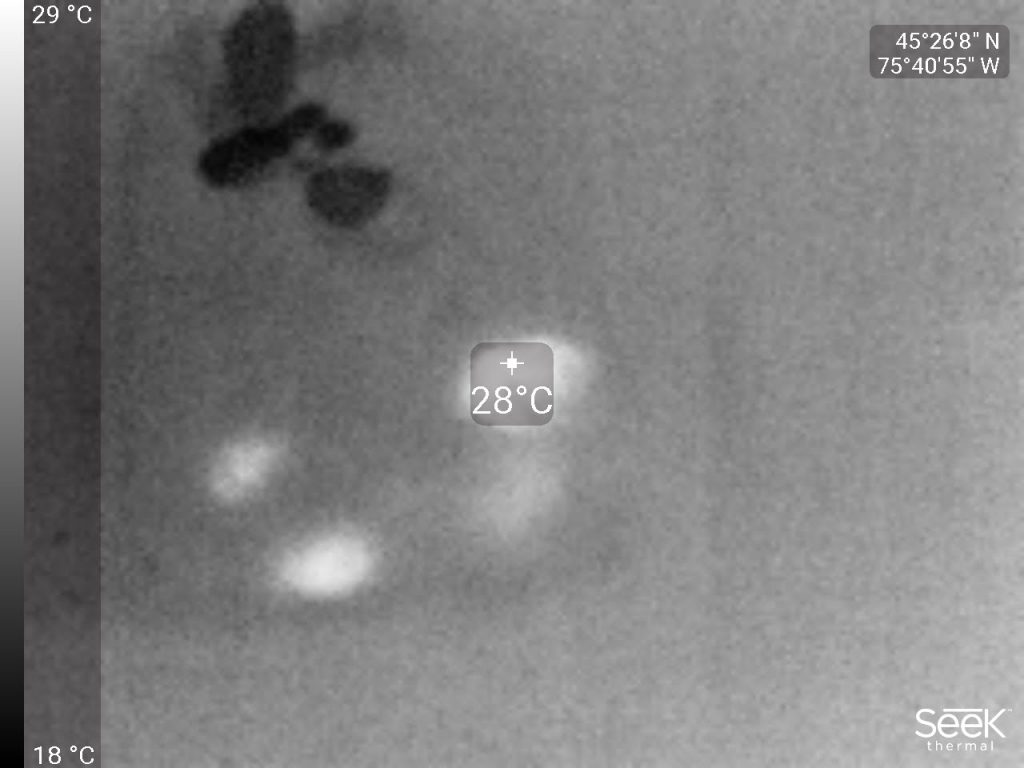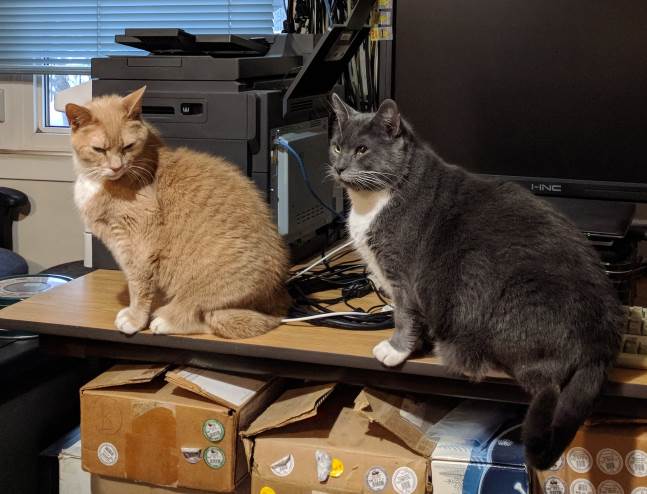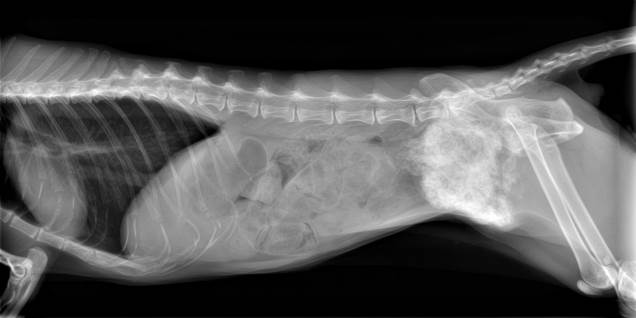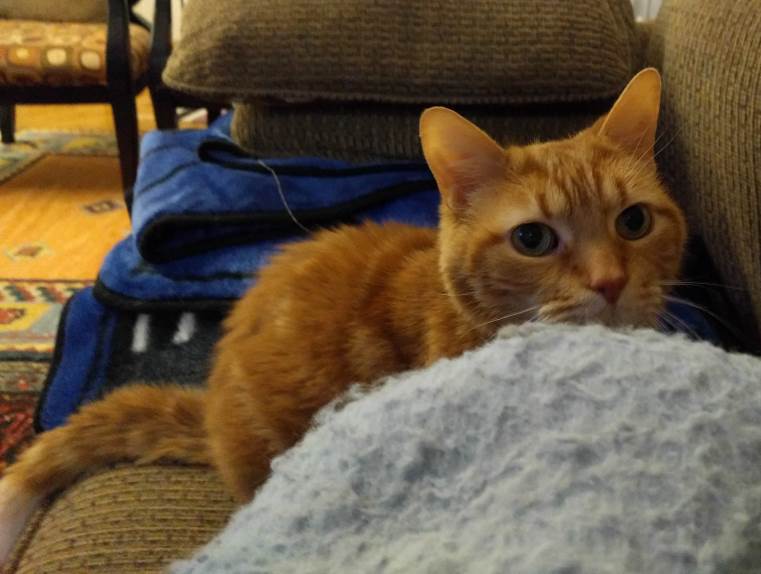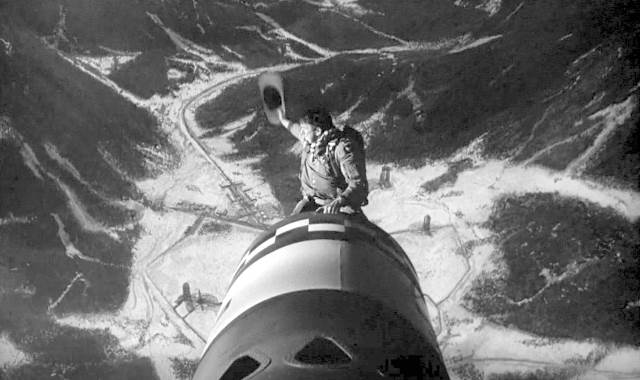I was surprised by the number of people who found my little exercise about kinetic energy interesting.
However, I was disappointed by the fact that only one person (an astrophysicist by trade) got it right.
It really isn’t a very difficult problem! You just have to remember that in addition to energy, momentum is also conserved.
In other words, when a train accelerates, it is pushing against something… the Earth, that is. So ever so slightly, the Earth accelerates backwards. The change in velocity may be tiny, but the change in energy is not necessarily so. It all depends on your reference frame.
So let’s do the math, starting with a train of mass \(m\) that accelerates from \(v_1\) to \(v_2\). (Yes, I am doing the math formally; we can plug in the actual numbers in the end.)
Momentum is of course velocity times mass. Momentum conversation means that the Earth’s speed will change as
\[\Delta v = -\frac{m}{M}(v_2-v_1),\]
where \(M\) is the Earth’s mass. If the initial speed of the earth is \(v_0\), the change in its kinetic energy will be given by
\[\frac{1}{2}M\left[(v_0+\Delta v)^2-v_0^2\right]=\frac{1}{2}M(2v_0\Delta v+\Delta v^2).\]
If \(v_0=0\), this becomes
\[\frac{1}{2}M\Delta v^2=\frac{m^2}{M}(v_2-v_1)^2,\]
which is very tiny if \(m\ll M\). However, if \(|v_0|>0\) and comparable in magnitude to \(v_2-v_1\) (or at least, \(|v_0|\gg|\Delta v|\)), we get
\[\frac{1}{2}M(2v_0\Delta v+\Delta v^2)=-mv_0(v_2-v_1)+\frac{m^2}{2M}(v_2-v_1)^2\simeq -mv_0(v_2-v_1).\]
Note that the actual mass of the Earth doesn’t even matter; we just used the fact that it’s much larger than the mass of the train.
So let’s plug in the numbers from the exercise: \(m=10000~{\rm kg}\), \(v_0=-10~{\rm m}/{\rm s}\) (negative, because relative to the moving train, the Earth is moving backwards), \(v_2-v_1=10~{\rm m}/{\rm s}\), thus \(-mv_0(v_2-v_1)=1000~{\rm kJ}\).
So the missing energy is found as the change in the Earth’s kinetic energy in the reference frame of the second moving train.
Note that in the reference frame of someone standing on the Earth, the change in the Earth’s kinetic energy is imperceptibly tiny; all the \(1500~{\rm kJ}\) go into accelerating the train. But in the reference frame of the observer moving on the second train on the parallel tracks, only \(500~{\rm kJ}\) goes into the kinetic energy of the first train, whereas \(1000~{\rm kJ}\) is added to the Earth’s kinetic energy. But in both cases, the total change in kinetic energy, \(1500~{\rm kJ}\), is the same and consistent with the readings of the electricity power meter.
Then again… maybe the symbolic calculation is too abstract. We could have done it with numbers all along. When a \(10000~{\rm kg}\) train’s speed goes from \(10~{\rm m}/{\rm s}\) to \(20~{\rm m}/{\rm s}\), it means that the \(6\times 10^{24}~{\rm kg}\) Earth’s speed (in the opposite direction) will change by \(10000\times 10/(6\times 10^{24})=1.67\times 10^{-20}~{\rm m}/{\rm s}\).
In the reference frame in which the Earth is at rest, the change in kinetic energy is \(\tfrac{1}{2}\times (6\times 10^{24})\times (1.67\times 10^{-20})^2=8.33\times 10^{-16}~{\rm J}\).
However, in the reference frame in which the Earth is already moving at \(10~{\rm m}/{\rm s}\), the change in kinetic energy is \(\tfrac{1}{2}\times (6\times 10^{24})\times (10+1.67\times 10^{-20})^2-\tfrac{1}{2}\times (6\times 10^{24})\times 10^2\)\({}=\tfrac{1}{2}\times (6\times 10^{24})\times[2\times 10\times 1.67\times 10^{-20}+(1.67\times 10^{-20})^2] \)\({}\simeq 1000~{\rm kJ}\).
